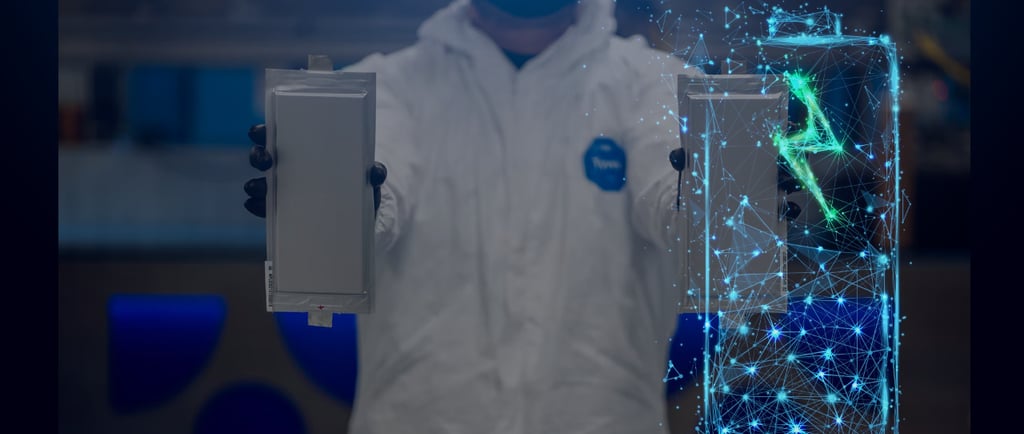The Future of Energy Storage: Solid State Batteries and Enhanced Safety
EV BATTERIES
1/10/20242 min read


Solid-State Batteries: Poised to Redefine Energy Storage
The energy storage landscape is poised for a transformative shift with the emergence of solid-state batteries (SSBs). These innovative batteries hold immense potential to surpass the limitations of current lithium-ion technology, fostering a paradigm shift in how we store and utilize energy.
Revolutionizing Safety and Performance:
Enhanced Safety: Unlike their flammable liquid counterparts, SSBs leverage non-combustible solid electrolytes, eliminating the risk of thermal runaway and significantly enhancing safety for applications like electric vehicles and grid storage.
Boosted Energy Density: SSBs offer the potential to store 2-3 times more energy per unit weight compared to lithium-ion batteries, offering prospects for extended driving ranges in EVs, compact battery packs, and enhanced power capabilities.
Rapid Charging: Facilitated by faster ion movement within the solid electrolyte, SSBs boast remarkably reduced charging times. This translates to significantly quicker refueling for electric vehicles and shorter turnaround times for mobile devices.
Operational Robustness: SSBs exhibit a broader operational temperature tolerance, functioning effectively in extreme temperatures unlike liquid-based batteries. This adaptability eliminates the need for complex thermal management systems and broadens their application scope.
Extended Lifespan: Due to their inherent stability, SSBs are projected to last 2-3 times longer than lithium-ion batteries before requiring replacement. This translates to reduced lifetime costs and lower environmental impact.
Challenges and the Road Ahead:
While the potential is undeniable, significant hurdles remain before SSBs transition from promising prototypes to widespread adoption:
Cost Optimization: Currently, SSBs are considerably more expensive to produce than lithium-ion batteries. Ongoing research and development efforts are focused on streamlining manufacturing processes and identifying cost-effective materials to address this challenge.
Material Innovation: Developing stable and highly conductive solid electrolytes remains a key research area. Overcoming material limitations is crucial for unlocking the full potential of SSB technology.
Scalability: Scaling up production to meet the anticipated demand for SSBs is another critical hurdle. Technological advancements and strategic collaborations are essential to facilitate the transition from small-scale production to mass manufacturing.
A Glimpse into the Future:
Despite the existing challenges, the future of energy storage appears inextricably linked to SSBs. With sustained research and development efforts, experts anticipate widespread adoption within the next 5-10 years. This revolutionary technology holds the potential to transform industries, from electric vehicles and renewable energy storage to consumer electronics and grid modernization.
The promise of SSBs extends beyond mere innovation; it signifies a step towards a sustainable and efficient energy future. Their disruptive potential is driving global research initiatives and industry collaborations, paving the way for a new era of energy storage and utilization.

Gofinite Ventures LLP
LLPIN : AAU-5144
